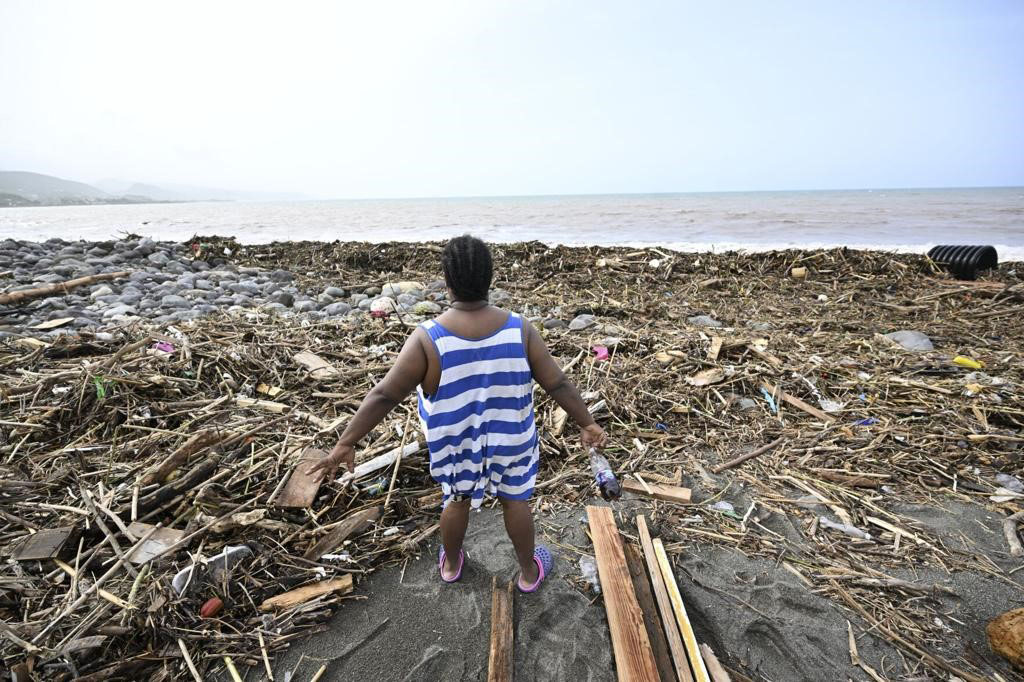CANCUN/TULUM, Mexico, (Reuters) – Tropical Storm Beryl was blowing out to the Gulf of Mexico yesterday afternoon and appeared likely to reach Texas by late tomorrow, after its strong winds and heavy rain largely spared Mexico’s top beach destinations.
The core of the storm, downgraded from a hurricane, crossed the Yucatan Peninsula by yesterday afternoon, with its maximum wind speeds slowing to around 65 miles mph (105 kph) after striking near the coastal beach resort of Tulum in the morning.
The storm, which at one point intensified to a massive Category 5 hurricane, left a deadly trail of destruction across the Caribbean earlier this week. However, there were no casualties in Mexico, the head of the country’s civil protection agency Laura Velazquez said in a press conference yesterday afternoon.
While Beryl’s passage over Mexico’s Quintana Roo and Yucatan states resulted in slower winds, the U.S. National Hurricane Center still forecast dangerous storm surges in the surrounding area.
For those who hunkered down as Beryl churned overhead, a sense of relief prevailed.
“Holy cow! It was an experience!” said Mexican tourist Juan Ochoa, who was staying in Tulum.
“Really only some plants flew up in the air,” he said. “Thank God we’re all OK.”
Tourist infrastructure was without major damage in Quintana Roo, the state government said in a statement.
Still, many in the area lost electricity, including 40% of Tulum, said Guillermo Nevarez, an official with Mexico’s national electricity company CFE, speaking to local broadcaster Milenio.
Civil protection chief Velazquez said she expected service to be restored in full by Sunday.
Among Mexico’s top tourist getaways, the Yucatan Peninsula is known for its white sand beaches, lush landscapes and Mayan ruins.
Stranded tourists camped out in Cancun’s international airport on Friday, unsure of when they would make it home.
Nora Vento said her flight home to Chile was postponed multiple times, and that her airline’s counter was unstaffed.
“So, I don’t know when I will get to Chile,” she said.
Beryl, currently located over the port of Progreso in Mexico’s Yucatan state, was expected to pick up intensity as it enters the Gulf of Mexico and forecast to regain hurricane status and approach the western Gulf coast on Sunday.
A hurricane watch was in effect for the Texas coast from the mouth of the Rio Grande northward to Sargent, according to the U.S. National Hurricane Center (NHC).
Mexico’s meteorological service issued a hurricane watch for the northeastern coast of Mexico from Barra el Mezquital to the mouth of the Rio Grande.
“There is an increasing risk of damaging hurricane-force winds and life-threatening storm surge in portions of northeastern Mexico and the lower and middle Texas Coast late Sunday and Monday where hurricane and storm surge watches have been issued,” the NHC said.
It warned that flash and urban flooding were possible across portions of the Texas Gulf Coast and eastern Texas from Sunday through the middle of next week.
Rainfall of 5 to 10 inches, with localized amounts of 15 inches, is projected across portions of the Texas Gulf Coast and eastern Texas beginning late on Sunday through the middle of next week.
Mexico’s national water commission, CONAGUA, flagged a risk of flooding around the tourist hubs, as well as in neighboring Campeche state.
Quintana Roo schools were closed, as were local beaches, and officials lifted a temporary ban on alcohol sales.
Beryl was the first hurricane of the 2024 Atlantic season, and this week became the earliest Category 5 hurricane on record, with scientists pointing to its rapid strengthening as almost certainly fueled by human-caused climate change.
Before reaching Mexico, Beryl wreaked havoc across several Caribbean islands. It swept through Jamaica, Grenada, St. Vincent and the Grenadines, in addition to unleashing heavy rainfall on northern Venezuela. It has claimed at least 11 lives, tearing apart buildings while felling power lines and trees.
Destruction in the islands of Grenada was especially pronounced.
Prime Minister Dickon Mitchell pointed to major damage to homes in Grenada, Carriacou and Petite Martinique during a video briefing Thursday night. Parts of the latter two islands suffered “almost complete devastation,” he said.
“Many of our citizens have lost everything.”
Mexico’s major oil platforms, primarily located in the southern rim of the Gulf of Mexico, are not expected to be affected or shut down.
Beryl is also expected to have little impact on U.S. offshore oil and gas production, energy companies said on Friday while evacuating personnel from some facilities out of caution.
Research by the ClimaMeter consortium determined that climate change significantly intensified Beryl. According to the study, the storm’s severity, along with its associated rainfall and wind speed, saw an increase of 10-30% as a direct result of climate change.

